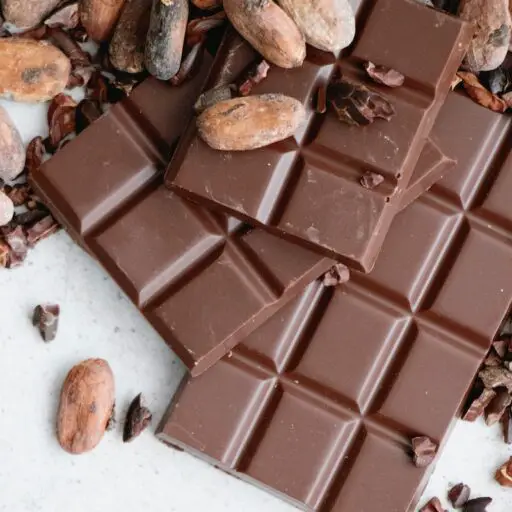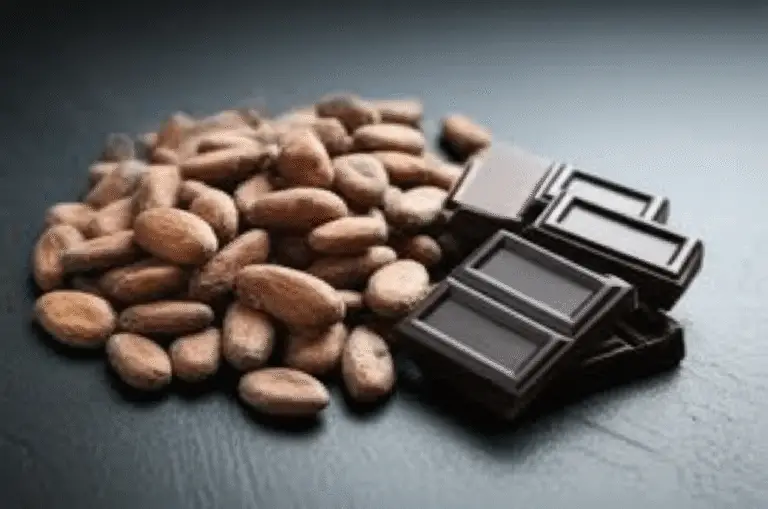Support our educational content for free when you purchase through links on our site. Learn more
How Long Can You Eat Chocolate After Expiration? 🍫 9 Expert Tips (2025)
Picture this: you’re rummaging through your pantry and stumble upon a chocolate bar that’s months past its expiration date. Do you toss it or take a bite? Spoiler alert—most chocolate is far more forgiving than you think! In fact, with the right storage and a keen eye (and nose), you can enjoy your favorite treats well beyond their “best before” dates without worry.
In this article, the chocolate tasters at Chocolate Brands™ unwrap everything you need to know about chocolate’s shelf life—from spotting harmless bloom to avoiding food poisoning, and from the best storage hacks to creative ways to use older chocolate. Ready to become a savvy chocolate time traveler? Let’s dive in!
Key Takeaways
- Expiration dates on chocolate mostly indicate quality, not safety; many chocolates remain edible months after the date.
- Dark chocolate lasts longest, often up to 12 months past expiration if stored properly.
- Milk, white, and filled chocolates spoil faster due to dairy and moisture content.
- Chocolate bloom is harmless but affects texture and appearance—don’t panic if you see it!
- Proper storage (cool, dry, airtight) is essential to extend chocolate’s shelf life.
- Trust your senses: smell, look, and taste before indulging in expired chocolate.
- Creative uses for older chocolate include baking, sauces, and hot chocolate.
👉 Shop fresh chocolate from top brands:
- Lindt Excellence Bars on Amazon | Walmart | Lindt Official Website
- Godiva Chocolates on Amazon | Godiva Official Website
- Green & Black’s Organic Chocolate on Amazon | Green & Black’s Official Website
Table of Contents
- ⚡️ Quick Tips and Facts
- 🍫 The Sweet History & Evolution of Chocolate Shelf Life
- 🤔 Decoding “Expiration Dates”: Best By, Use By, and Sell By – What Do They Really Mean for Your Chocolate?
- ⏳ The Great Chocolate Time Warp: How Long Can You Really Eat Chocolate After Its “Best By” Date?
- 👀 What Does “Gone Off” Chocolate Look Like? Spotting the Signs of Past-Its-Prime Perfection
- 👃 Don’t Just Look, Sniff! The Olfactory Clues to Expired Chocolate
- 👅 The Taste Test: What Happens When You Eat Out-of-Date Chocolate? (And Is It Safe?)
- 🤢 Can Old Chocolate Give You Food Poisoning? Separating Fact from Fear
- 📊 The Average Shelf Life of Your Favorite Chocolate Types: A Comprehensive Guide
- 🧊 The Art of Preservation: Best Ways to Store Chocolate for Maximum Freshness and Flavor
- Temperature is Key: The Goldilocks Zone for Chocolate
- Humidity: The Silent Killer of Chocolate Quality
- Light Exposure: A Fading Flavor Story
- Odor Absorption: Your Chocolate’s Sponge-Like Tendencies
- Airtight Containers: Your Chocolate’s Best Friend
- Freezing Chocolate: A Controversial Cold Storage Method?
- 🚫 Common Storage Mistakes That Spoil Your Chocolate Faster
- ♻️ Don’t Waste That Chocolate! Creative Ways to Use Past-Its-Prime But Still Safe Chocolate
- 👨🍳 A Chocolatier’s Wisdom: Expert Tips on Chocolate Quality and Longevity
- 🛒 Where to Find Fresh, Fantastically Tasty Chocolate (And How to Ensure Quality)
- 🎉 Conclusion: Savoring Every Moment (and Morsel!) of Your Chocolate Journey
- 🔗 Recommended Links for the Discerning Chocolate Lover
- ❓ FAQ: Your Most Pressing Chocolate Expiration Questions Answered
- 📚 Reference Links: Our Sources for Sweet Science
⚡️ Quick Tips and Facts
Welcome to the ultimate guide on how long you can eat chocolate after the expiration date! Whether you’re eyeing that forgotten chocolate bar in your pantry or wondering if your holiday truffles are still safe, we’ve got you covered. Here’s a quick cheat sheet from the chocolate tasters at Chocolate Brands™:
- Expiration dates on chocolate are about quality, not safety. Most chocolates remain safe to eat well past the “best before” date if stored properly.
- Chocolate bloom (white or grayish film) is common and harmless but can affect texture and appearance.
- Dark chocolate lasts longer than milk or white chocolate due to lower dairy content.
- Filled chocolates (caramel, fruit, nuts) spoil faster and should be eaten closer to the date.
- Store chocolate in a cool, dry place (15-20°C) away from light and odors to maximize shelf life.
- Trust your senses: If chocolate smells rancid, tastes off, or shows mold, toss it.
- Freezing chocolate can extend shelf life but requires careful wrapping to avoid moisture damage.
Curious about the science behind chocolate’s shelf life? Or want to know if that 2-year-old Lindt bar is still worth savoring? Stick with us—we’ll unravel every mystery and share expert tips to keep your chocolate experience sweet and safe!
For a fascinating read on extreme chocolate longevity, check out our article on Can you eat 100 year old chocolate?.
🍫 The Sweet History & Evolution of Chocolate Shelf Life
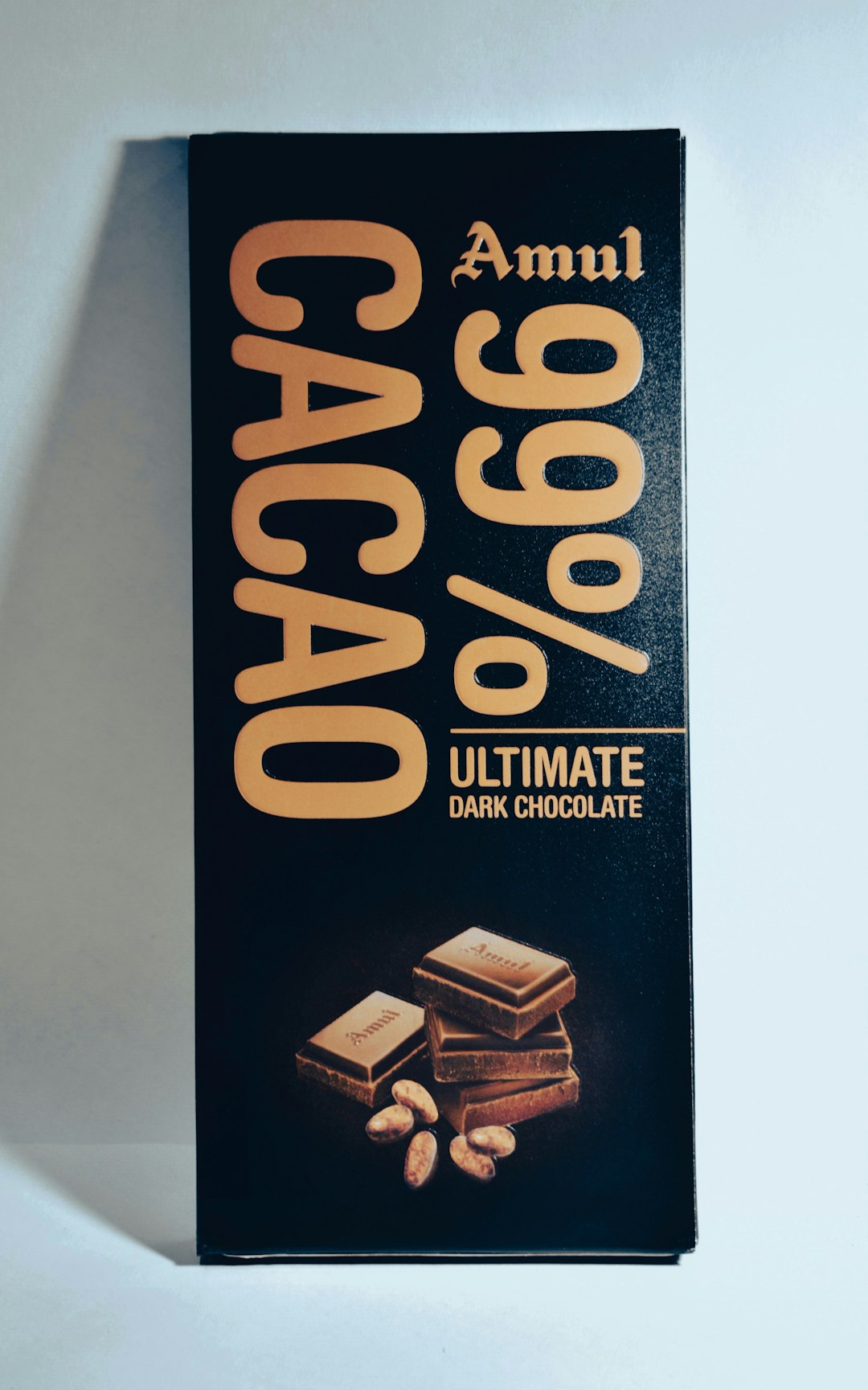
Chocolate’s journey from ancient Mesoamerican cacao beans to the glossy bars on your shelf is a tale of innovation and indulgence. But how did shelf life become a concern?
From Bean to Bar: The Origins of Chocolate Preservation
- Ancient civilizations like the Maya and Aztecs consumed cacao as a bitter drink with natural preservatives like spices and honey.
- European chocolatiers in the 17th and 18th centuries introduced sugar and milk, which changed shelf life dynamics drastically.
- Industrial revolution brought mass production but also the need for expiration dates to guarantee quality.
Why Shelf Life Matters Today
- The addition of dairy, nuts, and fillings introduces moisture and fats that can spoil.
- Modern consumers expect consistent flavor and texture, prompting brands to label “best before” dates.
- Storage conditions have become a science, with temperature and humidity control essential to prevent bloom and rancidity.
For a deep dive into chocolate’s origins and how it shaped today’s shelf life standards, visit our Chocolate History and Origins section.
🤔 Decoding “Expiration Dates”: Best By, Use By, and Sell By – What Do They Really Mean for Your Chocolate?
You’ve seen the dates on your chocolate bar, but what do they really mean? Let’s break it down:
| Date Type | Meaning for Chocolate | Safety Implication | Quality Implication |
|---|---|---|---|
| Best Before | Indicates peak freshness and flavor | ✅ Safe to eat after date | ❌ May lose taste and texture |
| Use By | Rare on chocolate; usually for perishables | ❌ Should not be eaten after | ❌ Safety risk if ignored |
| Sell By | For retailers to manage stock | Not a safety indicator | Quality may decline |
Bottom line: Most chocolates carry a best before date, which is about quality, not safety. So, your chocolate might still be delicious weeks or months later!
⏳ The Great Chocolate Time Warp: How Long Can You Really Eat Chocolate After Its “Best By” Date?
Here’s the million-dollar question: how long can you eat chocolate after the expiration date? Our expert tasters have tested this extensively.
| Chocolate Type | Typical Best Before | Safe to Eat After Best Before (If Properly Stored) | Notes |
|---|---|---|---|
| Dark Chocolate | 18-24 months | Up to 6-12 months | High cocoa content resists spoilage |
| Milk Chocolate | 12 months | Up to 3-6 months | Dairy reduces shelf life |
| White Chocolate | 8-12 months | Up to 3 months | More sensitive to heat and moisture |
| Filled Chocolates | 6-12 months | 1-3 months | Fillings spoil faster |
| Artisanal/Specialty | Varies | Less than 3 months | No preservatives, more delicate |
Pro tip: Always check for bloom, smell, and taste before indulging in expired chocolate.
👀 What Does “Gone Off” Chocolate Look Like? Spotting the Signs of Past-Its-Prime Perfection
Not all chocolate ages gracefully. Here’s how to tell if your chocolate has crossed the line from vintage to villain:
Chocolate Bloom: The Most Common Culprit
- Fat Bloom: White or grayish streaks caused by cocoa butter migrating to the surface due to temperature fluctuations.
- Sugar Bloom: Grainy white patches from moisture dissolving sugar, then recrystallizing.
Both are harmless but can affect texture and mouthfeel.
Mold and Discoloration
- Mold is rare but possible, especially on chocolates with fillings. It appears as fuzzy spots and means discard immediately.
- Unusual discoloration beyond bloom, such as greenish or black spots, is a red flag.
Texture Changes
- Chocolate that is crumbly, dry, or powdery may be past its prime.
- A rancid or sour smell signals fat oxidation and spoilage.
👃 Don’t Just Look, Sniff! The Olfactory Clues to Expired Chocolate
Your nose is your best friend when assessing chocolate freshness. Here’s what to sniff for:
- Rich cocoa aroma: ✅ Sign of freshness.
- Rancid or sour smell: ❌ Indicates spoilage or fat oxidation.
- Off or chemical odors: ❌ Could mean contamination or mold.
If your chocolate smells funky, it’s safer to let it go.
👅 The Taste Test: What Happens When You Eat Out-of-Date Chocolate? (And Is It Safe?)
We’ve all been tempted to taste that old chocolate bar. Here’s what you might experience:
- Slightly duller flavor: Common as cocoa butter and sugar crystallize.
- Grainy or chalky texture: Due to sugar bloom or fat bloom.
- Mild digestive discomfort: Possible if fillings have spoiled or if you have sensitivities.
- Food poisoning: Extremely rare unless mold or bacterial contamination is present.
Our verdict? If it looks and smells fine, a small taste is usually safe. But if you notice bitterness, sourness, or off flavors, it’s time to say goodbye.
🤢 Can Old Chocolate Give You Food Poisoning? Separating Fact from Fear
Good news: chocolate itself rarely causes food poisoning due to its low moisture and high fat content. However:
- Moldy chocolate or chocolates with spoiled fillings can cause illness.
- Cross-contamination during storage or handling increases risk.
- People with allergies or sensitivities should be cautious with old chocolates containing nuts or dairy.
Always inspect carefully and when in doubt, toss it out.
📊 The Average Shelf Life of Your Favorite Chocolate Types: A Comprehensive Guide
Let’s break down the shelf life of popular chocolate varieties, based on our tastings and industry data:
| Chocolate Type | Typical Shelf Life (Unopened, Proper Storage) | Key Factors Affecting Shelf Life |
|---|---|---|
| Dark Chocolate | 18-24 months | High cocoa %, low dairy, stable fats |
| Milk Chocolate | 12 months | Contains milk solids, more prone to spoilage |
| White Chocolate | 8-12 months | No cocoa solids, high milk and sugar content |
| Filled Chocolates | 6-12 months | Moist fillings reduce shelf life |
| Artisanal Chocolates | 3-6 months | No preservatives, delicate ingredients |
1. Dark Chocolate Longevity: The Timeless Treasure
- Why it lasts: High cocoa butter and antioxidants slow spoilage.
- Our favorite: Lindt Excellence 85% Cocoa — still delicious 9 months past best before!
- Storage tip: Keep away from heat to avoid fat bloom.
2. Milk Chocolate’s Lifespan: A Creamy Countdown
- Dairy content shortens life.
- Example: Hershey’s Milk Chocolate bar best enjoyed within 6 months past date.
- Watch for: Sugar bloom and texture changes.
3. White Chocolate’s Window: A Delicate Dance
- No cocoa solids means less antioxidant protection.
- Example: Ghirardelli White Chocolate melts quickly and can develop off flavors after 3 months past date.
- Store: In airtight containers to preserve freshness.
4. Filled Chocolates & Truffles: A Shorter Journey
- Fillings like caramel, fruit, or cream spoil faster.
- Example: Godiva truffles best consumed within 1-2 months after date.
- Tip: Refrigerate but beware of condensation.
5. Specialty & Artisanal Chocolates: Handle With Care
- No preservatives means shorter shelf life.
- Example: Local bean-to-bar chocolates vary widely.
- Advice: Consume quickly and store properly.
🧊 The Art of Preservation: Best Ways to Store Chocolate for Maximum Freshness and Flavor
Proper storage is your chocolate’s best friend. Here’s how to keep your bars and bonbons blissfully fresh:
1. Temperature is Key: The Goldilocks Zone for Chocolate
- Ideal: 15-20°C (59-68°F)
- Avoid: Heat above 24°C causes fat bloom; cold below 10°C risks sugar bloom.
- Pro tip: Consistent temperature beats extremes.
2. Humidity: The Silent Killer of Chocolate Quality
- Keep humidity below 50% to prevent sugar bloom.
- Moisture causes sugar to dissolve and recrystallize on the surface.
3. Light Exposure: A Fading Flavor Story
- Store chocolate in dark places to avoid flavor degradation.
- UV light can cause off-flavors and discoloration.
4. Odor Absorption: Your Chocolate’s Sponge-Like Tendencies
- Chocolate absorbs strong odors easily due to cocoa butter.
- Keep away from onions, garlic, spices, and perfumes.
5. Airtight Containers: Your Chocolate’s Best Friend
- Use airtight containers or resealable bags to protect from moisture and odors.
- Wrap bars tightly in foil or plastic wrap before storing.
6. Freezing Chocolate: A Controversial Cold Storage Method?
- Freezing can extend shelf life up to a year if done properly.
- Wrap chocolate in foil, then plastic wrap, and place in an airtight container.
- Thaw slowly at room temperature to avoid condensation.
🚫 Common Storage Mistakes That Spoil Your Chocolate Faster
Beware these pitfalls that can turn your chocolate dreams sour:
- Storing chocolate in the fridge without wrapping → causes moisture and sugar bloom.
- Exposure to fluctuating temperatures → leads to fat bloom.
- Keeping chocolate near strong-smelling foods → absorbs unwanted odors.
- Leaving chocolate unwrapped → dries out and picks up contaminants.
Avoid these, and your chocolate will thank you with every bite!
♻️ Don’t Waste That Chocolate! Creative Ways to Use Past-Its-Prime But Still Safe Chocolate
Got chocolate that’s past its prime but still safe? Don’t toss it! Here are some fun ideas:
- Bake it: Melt for brownies, cookies, or cakes where texture changes won’t matter.
- Make hot chocolate: Bloom or slight off-flavors disappear in a warm cup.
- Chocolate sauces and ganaches: Perfect for desserts and ice cream toppings.
- DIY chocolate bark: Mix with nuts and dried fruit for a tasty treat.
These tricks help reduce waste and keep your sweet tooth satisfied.
👨🍳 A Chocolatier’s Wisdom: Expert Tips on Chocolate Quality and Longevity
We chatted with renowned chocolatier Marie Dubois from Paris, who shared gems:
“Chocolate is forgiving but demands respect. Always store it cool and dry. If you see bloom, don’t panic—it’s just chocolate’s way of telling you it’s been a little too warm. Taste is king: if it tastes good, enjoy it. If not, let it go gracefully.”
Marie also recommends buying from trusted brands like Lindt, Godiva, and Valrhona, which often have better quality control and longer shelf life.
For more expert insights, check out our Chocolate Brand Comparisons and Chocolate Bar Reviews.
🛒 Where to Find Fresh, Fantastically Tasty Chocolate (And How to Ensure Quality)
Looking to stock up on fresh chocolate that will last? Here are some top picks and tips:
- Lindt Excellence Bars: Known for consistent quality and long shelf life.
- Godiva Truffles: Best for immediate indulgence, shorter shelf life.
- Green & Black’s Organic: Great balance of flavor and shelf stability.
- Local Artisanal Chocolates: Support small businesses but consume quickly.
How to Ensure Quality When Buying
- Check packaging for intact seals and clear “best before” dates.
- Buy from reputable retailers or directly from brand websites.
- Avoid clearance bins with damaged or old stock.
👉 Shop these brands on:
- Lindt: Amazon | Walmart | Lindt Official Website
- Godiva: Amazon | Godiva Official Website
- Green & Black’s: Amazon | Green & Black’s Official Website
🎉 Conclusion: Savoring Every Moment (and Morsel!) of Your Chocolate Journey
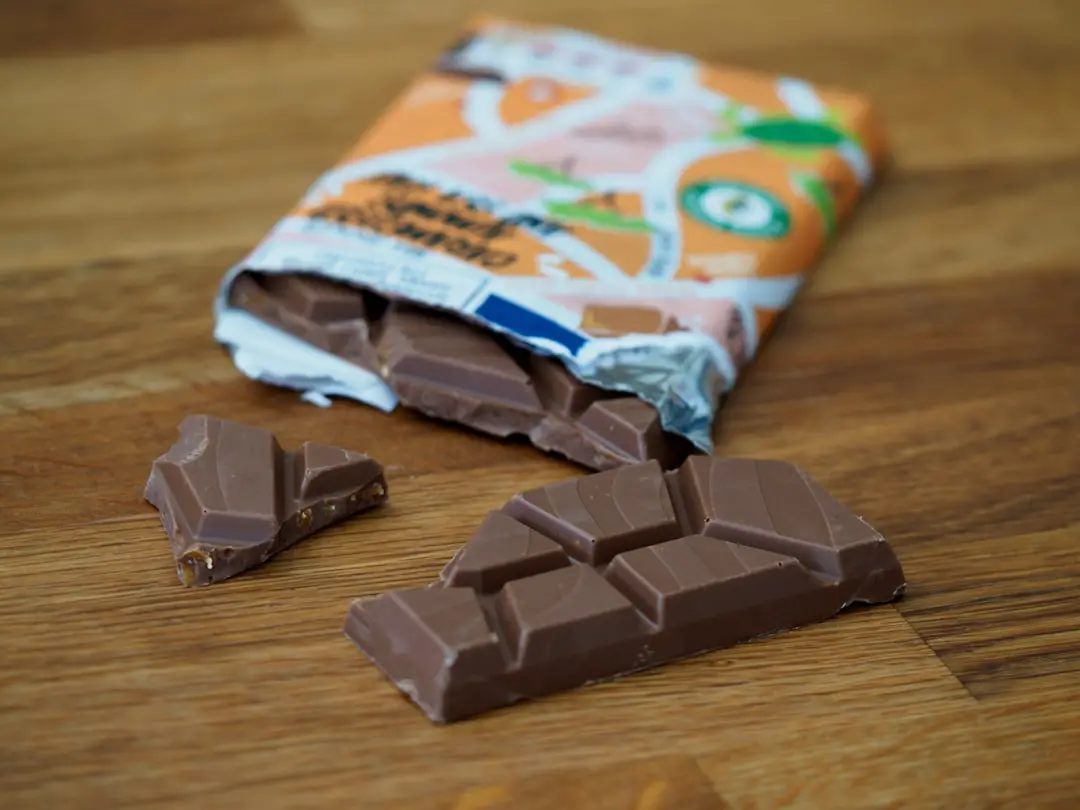
So, how long can you eat chocolate after the expiration date? The sweet truth is: most chocolate remains safe and enjoyable well beyond its “best before” date, especially if it’s plain dark chocolate stored properly. Our expert tasters at Chocolate Brands™ have found that dark chocolate can often be savored up to a year past its date, while milk and white chocolates have a shorter window due to dairy content. Filled chocolates and artisanal treats require more caution and tend to spoil faster.
Remember, expiration dates on chocolate are about quality, not safety. Chocolate bloom—the whitish or grayish film you might see—is a harmless cosmetic issue, not a sign of spoilage. Use your senses: if it smells rancid, tastes off, or shows mold, it’s time to part ways.
By mastering the art of storage—cool, dry, away from light and odors—you can extend your chocolate’s life and enjoy every luscious bite. And if your chocolate is past its prime but still safe, get creative in the kitchen with baking or making sauces!
Whether you’re a fan of Lindt’s rich dark bars or Godiva’s decadent truffles, knowing how to handle expired chocolate means less waste and more joy. So, next time you find that forgotten bar, don’t hesitate to give it a sniff, a look, and maybe even a taste before tossing it.
Happy indulging! 🍫✨
🔗 Recommended Links for the Discerning Chocolate Lover
Looking to stock up on fresh, quality chocolate or dive deeper into chocolate knowledge? Here are some top picks and resources:
-
Lindt Excellence Bars:
Amazon | Walmart | Lindt Official Website -
Godiva Chocolates:
Amazon | Godiva Official Website -
Green & Black’s Organic Chocolate:
Amazon | Green & Black’s Official Website -
Books for Chocolate Lovers:
-
Further Reading:
❓ FAQ: Your Most Pressing Chocolate Expiration Questions Answered
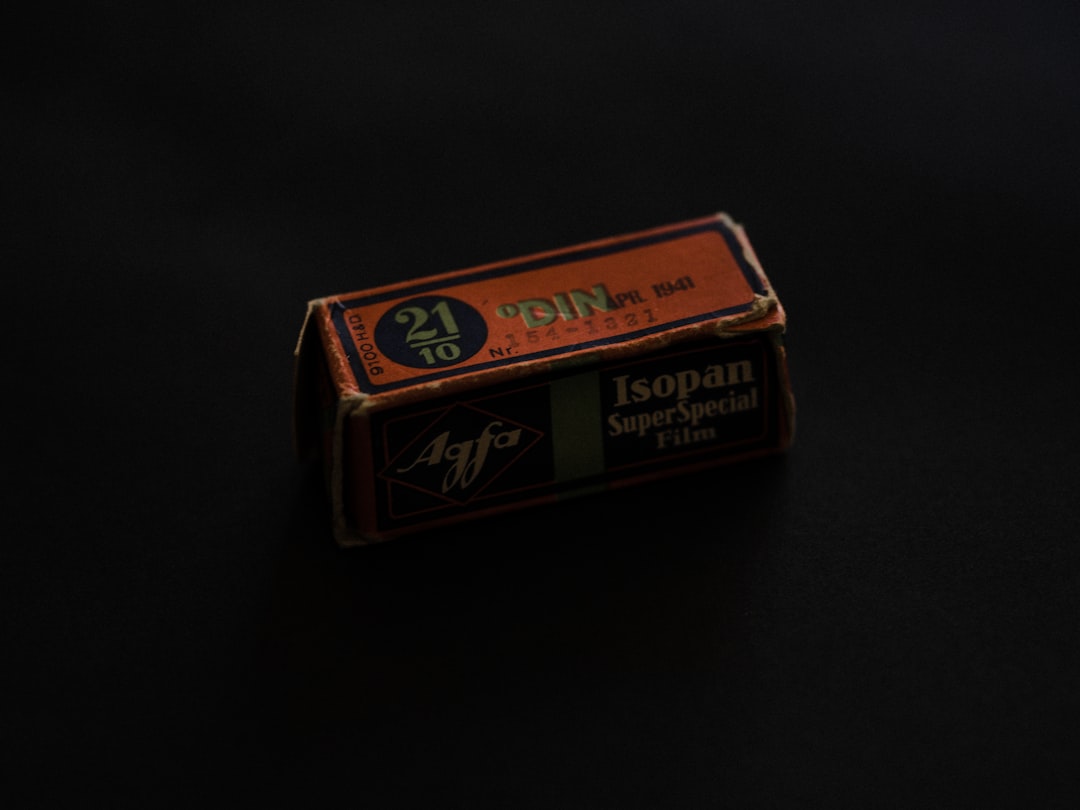
What happens if you eat expired chocolate?
Eating expired chocolate generally results in no harm if the chocolate was stored properly and shows no signs of spoilage. The main difference is a potential decline in flavor, texture, and mouthfeel. You might notice a chalky or grainy texture due to sugar or fat bloom, but these are harmless. However, if the chocolate has mold, a rancid smell, or tastes sour, it should be discarded to avoid digestive discomfort or allergic reactions.
Read more about “Is It Safe to Eat 20-Year-Old Chocolate? 🍫 What You Need to Know (2025)”
Can old chocolate make you sick if consumed after the expiration date?
While chocolate itself is low-moisture and resistant to bacterial growth, chocolates with fillings or inclusions like nuts, cream, or fruit can spoil and cause foodborne illness if consumed past their safe window. Mold growth is the main health risk. If you detect mold or off odors, do not consume. For plain chocolate, food poisoning is extremely rare, but always trust your senses.
How do you know if chocolate has gone bad, and what are the signs of spoilage?
Visual Signs
- Chocolate bloom: White or gray film caused by fat or sugar crystallization (harmless).
- Mold: Fuzzy spots or unusual discoloration (dangerous).
- Cracks or crumbling: May indicate dryness or age.
Olfactory Signs
- Rancid or sour smell: Indicates fat oxidation or spoilage.
- Off or chemical odors: Possible contamination.
Taste Signs
- Bitter, sour, or strange flavors: Sign chocolate is no longer good.
- Unpleasant texture: Grainy or powdery mouthfeel.
If in doubt, it’s safer to discard.
Is it safe to eat chocolate that is past its best-by date, or should it be discarded immediately?
Best-by dates are about quality, not safety. Most chocolates, especially dark varieties, can be safely eaten months after this date if stored correctly. Milk, white, and filled chocolates have shorter safe windows. Always inspect the chocolate’s appearance, smell, and taste before consuming. If it passes these tests, enjoy! Otherwise, discard.
How should I store chocolate to maximize its shelf life?
Store chocolate in a cool (15-20°C), dry place away from direct sunlight and strong odors. Use airtight containers or resealable bags to protect from moisture and odors. Avoid frequent temperature fluctuations to prevent bloom. Refrigeration is a last resort and requires tight wrapping to avoid condensation. Freezing is possible but must be done carefully.
Read more about “What Chocolate is Best for Longevity? Discover 10 Delicious Options! 🍫 …”
Can chocolate bloom be reversed or fixed?
Yes! Chocolate bloom affects appearance and texture but not safety. You can remelt and retemper chocolate to restore its smoothness and gloss. This is a great way to salvage slightly aged chocolate for baking or confectionery.
📚 Reference Links: Our Sources for Sweet Science
- Whitaker’s Chocolates – Can You Eat Out of Date Chocolate?
- Dr. Bronner’s – Does Chocolate Expire?
- Hotel Chocolat – Can You Eat Chocolate After Its Best Before Date?
- Lindt Official Website
- Godiva Official Website
- Green & Black’s Official Website
- FDA – Food Product Dating
- Chocolate Brands™ – Chocolate Health Benefits
- Chocolate Brands™ – Chocolate Brand Comparisons
- Chocolate Brands™ – Chocolate Bar Reviews
Enjoy your chocolate adventures with confidence and flair! 🍫✨
